In 2023, the global SIP trunking services market was valued at $54.20 billion and is projected to reach $177.84 billion by 2032, growing at a CAGR of 14.13%. This surge reflects the increasing demand for scalable, cost-effective communication solutions as businesses transition from traditional phone systems to internet-based telephony.
As organizations navigate the complexities of modern communication, understanding the distinctions between IP trunking and SIP trunking becomes crucial. Both technologies offer unique advantages tailored to different business needs and infrastructures. This guide delves into their differences, helping you determine the most suitable telephony system for your network.
Key Takeaways
- SIP trunking is a standardized form of IP trunking that uses the Session Initiation Protocol to manage voice, video, and messaging sessions, offering broader compatibility, better scalability, and integration with cloud-based tools.
- While IP trunking can include proprietary or vendor-specific systems, SIP trunking delivers lower long-term costs, simplified compliance, and better support for hybrid and global teams through features like failover, encryption, and UCaaS integration.
- For regulated industries or isolated networks, traditional IP trunking may still be viable, but SIP’s flexibility, open standards, and readiness for 5G, WebRTC, and CPaaS-driven telecom make it the clear choice for future-proofed communications architecture.
- Evaluating trunking providers requires a deep review of SLAs, codec support, failover routing, security practices, and integration capabilities, not just pricing or uptime promises.
- Smart migrations to SIP should include SBC deployment, phased rollouts, bandwidth assessments, and strong security configurations (e.g., TLS + SRTP) to avoid service disruptions and ensure seamless transitions from legacy systems.
Stop Comparing Apples to Oranges: Clarifying Industry Misconceptions
Ask five IT managers the difference between IP trunking and SIP trunking, and you’ll probably get five conflicting answers. That’s not a coincidence. The entire conversation is often framed wrong from the start. Comparing SIP trunking to IP trunking is like comparing espresso to coffee — one’s a type of the other, not a competitor.
IP trunking is the umbrella. It simply means transmitting voice or data over an IP-based network instead of copper lines. It could involve proprietary signaling protocols, vendor-specific formats, or even hybrid setups depending on the hardware. SIP trunking, on the other hand, is a specific kind of IP trunking that uses the Session Initiation Protocol (SIP) for managing call sessions. It’s standardized, widely adopted, and designed for rich multimedia communications.
Vendors often blur the lines for marketing. Some label their proprietary voice-over-IP solution as “IP trunking” to avoid questions about interoperability. Others push SIP branding even if they only support a fraction of SIP’s functionality. It’s no wonder decision-makers get confused.
To cut through the noise, here’s a simple way to think about it:
| Category | IP Trunking | SIP Trunking |
| Protocol Type | Can vary (often proprietary) | Always SIP (IETF standard) |
| Compatibility | Usually limited to vendor gear | Broad compatibility across platforms |
| Use Case | Voice over private networks | Unified communications over internet |
| Flexibility | Fixed configurations | Dynamic, cloud-friendly |
| Layer of Operation | Varies | Application layer |
SIP trunking isn’t better just because it’s newer. It’s more flexible because it sits on a standard protocol stack and plays nicely with cloud-native tools. The mistake is thinking they’re alternatives — they’re not. SIP trunking is IP trunking. It’s just the more scalable, standards-based version.
The Cost Equation (With Hidden Factors)
Costs extend beyond just monthly fees. A three-year analysis reveals differences worth noting. For example, a mid-sized firm might pay around $2,500 monthly for SIP trunking compared to $1,800 with an IP trunking solution. However, additional expenses change the picture. Licensing fees, maintenance contracts, extra bandwidth for peak loads, and failover solutions can raise the overall cost.
Consider a hypothetical case study: Company A opts for SIP trunking. They enjoy built-in compliance and lower admin overhead. Their TCO over three years may total roughly $90,000. Meanwhile, Company B deploys a bespoke IP trunking system on a closed network. Licensing, periodic maintenance, and custom failover measures push their TCO to around $110,000 over the same period.
| Factor | SIP Trunking (3-Year Estimate) | IP Trunking (3-Year Estimate) |
| Licensing | $15,000 | $20,000 |
| Maintenance | $20,000 | $30,000 |
| Bandwidth | $10,000 | $15,000 |
| Failover Systems | $5,000 | $10,000 |
| Admin Overhead | $10,000 | $15,000 |
| Total | $90,000 | $110,000 |
Keep an eye on hidden costs. They often determine which solution offers better long-term value.
Regulatory and Compliance Costs
Compliance matters, especially when regulations like HIPAA, GDPR, and PCI-DSS come into play. Many SIP trunking providers build compliance checks into their services. Their solutions cover encrypted signaling, data retention, and secure call routing. Meanwhile, bespoke IP trunking systems may require separate compliance measures. Separate contracts or customized setups might drive up costs, impacting overall ROI.
Regulatory standards shape communication choices. Providers that integrate compliance can save time and resources, giving businesses a leg up on compliance audits and legal reviews.
Use Case Matchmaking – Who Should Use What and Why
When IP Trunking (Non-SIP) Still Makes Sense
Some environments favor traditional IP trunking over SIP. Government agencies, finance companies, and large institutions with strict internal controls may appreciate vendor-specific solutions. Controlled networks often value ultra-low latency and stable, predictable performance. In these scenarios, bespoke IP setups meet specific needs that standardized SIP sometimes struggles to address.
Vendor-specific deployments might outperform SIP in ultra-secure, isolated environments. They prove ideal for facilities that require unwavering performance with limited external interaction.
SIP Trunking for Scalable, Global, or Hybrid Teams
Hybrid teams, global call centers, and companies with a mobile workforce lean toward SIP trunking. SIP accommodates softphones, mobile clients, video conferencing, and even SMS from one endpoint. Businesses embracing global communication find SIP trunks adapt well to distributed teams. They provide seamless connectivity regardless of employee location or network structure.
Organizations aiming for scalability favor SIP for its ability to grow dynamically. Integrated features simplify management for dispersed teams, supporting diverse communication channels without added complexity.
Performance and Reliability Metrics: How to Choose Like an Engineer
SLA Breakdown: What to Demand from a Trunking Provider
Choosing a trunking provider isn’t just about cost or call quality—it’s about what’s written in their SLA. Every provider promises reliability, but not all back it up with transparent, measurable terms. Look for specifics, not vague guarantees.
Checklist for Evaluating a Trunking SLA:
- Uptime Guarantee: At least 99.99%—with penalties clearly defined.
- Jitter Buffers: Built-in support to manage packet variation and maintain voice clarity.
- Failover Routing: Automatic rerouting during outages with zero manual intervention.
- Codec Support: Wide range of codecs, including G.711, G.729, and OPUS.
- Latency Thresholds: Should maintain sub-150ms round trip.
- Packet Loss Policy: Clear limits and remediation protocols.
Questions to Ask Providers:
- What happens during a Tier 1 carrier failure—how fast does traffic reroute?
- Can you show your peering arrangements and upstream carriers?
- How are jitter and packet loss monitored in real time?
- Do you offer active-active failover or just warm standby?
- What’s your average call setup time across routes?
Pressing for these answers early helps avoid SLA loopholes that only show up during an outage.
Real-World Redundancy Scenarios
Redundancy isn’t optional, it’s part of core infrastructure planning. SIP trunking offers more flexibility than traditional IP trunking when building fault-tolerant architectures.
Here are a few working models engineers often deploy:
1. Dual-Provider SIP Failover
- Two providers configured via SIP-aware SBCs
- DNS-SRV failover or route priority based on performance
- Maintains call continuity even if one provider fails
2. MPLS + Public Internet Hybrid
- Critical traffic flows through MPLS for reliability
- Overflow and non-critical sessions shift to the public internet
- Reduces costs without compromising SLA-tier voice traffic
3. Direct-to-Cloud SIP with SBCs
- Edge SBCs route calls directly to cloud platforms like Microsoft Teams or Zoom Phone
- Local survivability built-in if cloud links drop
- Ideal for UCaaS-first environments
Integration and Interoperability: Avoiding the Hidden Nightmares
PBX and UCaaS Compatibility Matrix
Legacy PBX systems and modern UCaaS platforms don’t always play well with every trunking method. SIP usually wins here thanks to standards-based signaling, but hardware quirks still matter. Compatibility is the bridge between theory and working audio.
Here’s a simplified compatibility chart:
| Platform | SIP Trunking | IP Trunking (Non-SIP) |
| Avaya IP Office | Yes | Limited |
| Cisco CallManager | Yes | With customization |
| Asterisk | Yes | Yes |
| Microsoft Teams | Via SBC | Not supported |
| Zoom Phone | Native | Not supported |
| Mitel | Certified | Certified |
Note: Even “supported” setups may require firmware updates, dial plan mapping, or SBC integration.
Avoiding Forklift Upgrades: Migration Planning
Shifting from PRI or legacy IP trunks doesn’t need to be all-or-nothing. Gradual rollout prevents downtime and spreads cost. The right plan keeps users unaware of the switch, just how IT likes it.
Practical Steps for Migration:
- Audit Current Infrastructure
Catalog all PBX, endpoints, codecs, and network segments. - Introduce SIP-Enabled SBCs
Act as a bridge between old hardware and new SIP trunks. - Start with Non-Critical Lines
Shift a subset of extensions to validate call quality and failover. - Segment Traffic by Function
Route outbound calls via SIP, keep inbound on legacy while testing. - Roll Out Site by Site
Use pilot offices or remote locations to scale incrementally.
- Monitor, Adjust, Document
Capture every config and test result – future-you will thank you.
Smart segmentation paired with SIP-ready tools like softswitches or hybrid PBX-SBC stacks smooths the path. No fire drills, no user complaints.
Security Considerations: SIP vs IP Trunking Under Attack
SIP-Specific Vulnerabilities
SIP wasn’t built with ironclad security in mind. It’s flexible, but that flexibility opens doors if you’re not careful. The most common threats? Registration hijacking, denial-of-service attacks, and caller ID spoofing. Attackers can flood endpoints, reroute calls, or impersonate users, all without breaching the perimeter.
Strong security starts with encryption. TLS should protect signaling, while SRTP secures the media path. Firewalls must be SIP-aware to avoid dropping legitimate traffic or letting malicious packets through. A hardened SBC acts as both gatekeeper and bodyguard, terminating suspicious sessions before they touch your core.
SIP Security Best Practices Checklist:
- Use TLS for SIP signaling
- Encrypt voice media with SRTP
- Harden SBCs with up-to-date firmware
- Create firewall rules specific to SIP ports (5060/5061)
- Disable open registration and unauthenticated outbound calling
- Monitor call patterns for fraud detection
SIP trunking can be secure, but only when treated like a core network asset, not a set-it-and-forget-it service.
Security in Proprietary IP Trunking
“Closed” doesn’t always mean protected. Proprietary IP trunking systems often rely on obscurity, assuming attackers won’t bother learning the protocols. That works, until it doesn’t. Many of those systems use default admin credentials, unpatched firmware, or obscure but vulnerable signaling mechanisms.
The risk? You might not even realize you’ve been breached. Some proprietary systems lack logging or real-time monitoring. They’re secure until someone finds the manual, and then everything’s exposed.
Vetting IP trunking security means asking hard questions:
- Are credentials hardcoded or changeable?
- Can logs be exported and analyzed in real time?
- How are access controls enforced?
- Is the encryption policy documented?
Future-Proofing: What’s Next in Trunking Technology?
The Rise of API-Driven Telecom (CPaaS and Beyond)
Trunking isn’t static anymore. SIP has become the backbone of programmable telecom. CPaaS providers like Twilio, Plivo, and Didlogic use SIP as a flexible foundation, layering APIs on top to give developers real-time control over call flows, recordings, fraud triggers, and billing.
Programmable trunks change the game. Call center traffic can scale dynamically based on API logic. A spike in fraud attempts? API calls can redirect traffic, notify admins, or trigger a temporary lockdown, all without human intervention.
This isn’t just voice – it’s infrastructure as code.
What Programmable SIP Can Do:
- Route based on user behavior or geography
- Record calls on demand via API triggers
- Detect and respond to call anomalies instantly
- Plug directly into CRMs, apps, and AI models
IPv6, WebRTC, and 5G Integration
The telecom stack is shifting fast. WebRTC pushes browser-based calling into the mainstream. 5G brings lower latency and network slicing. IPv6 is no longer optional. SIP trunks adapt to each of these shifts without needing forklift upgrades.
WebRTC endpoints connect directly to SIP trunks via media gateways. That means lower complexity and native support for mobile-first apps. As 5G networks mature, SIP trunks route HD voice and video without depending on aging copper or legacy codecs.
Conclusion: Make the Right Call for Your Voice Stack
Voice is no longer just a utility – it’s a strategic asset. Choosing between SIP trunking and traditional IP trunking isn’t about protocol preferences. It’s about aligning your communication strategy with how your business works, and where it’s headed.
Audit your existing setup. Then map it against your future state. Planning for growth, security, and flexibility starts with asking the right questions about your voice infrastructure.
Need help evaluating or testing a SIP trunk setup?
Reach out to Didlogic for a free architectural consult.
Further Reading
- What is SIP trunking?
- SIP trunking capacity
- SIP trunking security
- Differences between SIP trunking and cloud PBX
- Differences between SIP trunking and telephony
- SIP session vs SIP trunk
- Differences between SIP Trunking and Session Border Controllers
- SIP Trunking vs PSTN
- SIP Trunking vs H.323
- Advantages of SIP Trunking
- SIP Trunk Costs
- SIP Trunking Migration Plan
- SIP Trunking Requirements










